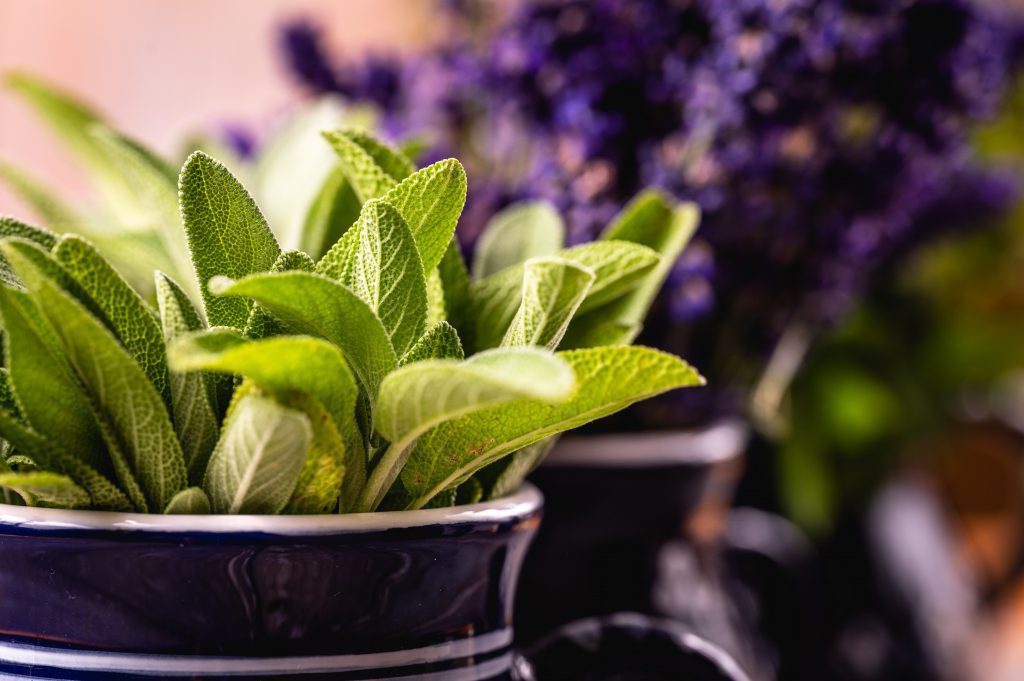5.12 Drugs of Concern
Even though some substances are not currently controlled by the Controlled Substances Act (US) or Controlled Drugs and Substances Act (CDSA – Canada), they pose risks to individuals who abuse them. The following section describes these drugs of concern and their associated risks.
What is DXM?

DXM is a cough suppressor found in more than 120 over-the-counter (OTC) cold medications, either alone or in combination with other drugs such as analgesics
(e.g., acetaminophen), antihistamines (e.g., chlorpheniramine), decongestants (e.g., pseudoephedrine), and/or expectorants (e.g., guaifenesin). The typical adult dose
for cough is 15 or 30 mg taken three to four times daily. The cough-suppressing effects of DXM persist for 5 to 6 hours after ingestion. When taken as directed, side effects are rarely observed.
What is its origin?
DXM users can obtain the drug at almost any pharmacy or supermarket, seeking out the products with the highest concentration of the drug from among all the OTC
cough and cold remedies that contain it. DXM products and powder can also be purchased on the Internet.
What are common street names?
Common street names include CCC, Dex, DXM, Poor Man’s PCP, Robo, Rojo, Skittles, Triple C, and Velvet.
What does it look like?
DXM can come in the form of cough syrup, tablets, capsules, or powder.
How is it abused?
DXM is abused in high doses to experience euphoria and visual and auditory hallucinations. Users take various amounts depending on their body weight and the effect they are attempting to achieve. Some users ingest 250 to 1,500 milligrams in a single dosage, far more than the recommended therapeutic dosages described above.
Illicit use of DXM is referred to on the street as “Robotripping”, “skittling”, or “dexing”. The first two terms are derived from the products that are most commonly abused, Robitussin and Coricidin HBP. DXM abuse has traditionally involved drinking large volumes of OTC liquid cough preparations. More recently, however, abuse of tablet and gel capsule preparations has increased.
These newer, high-dose DXM products have particular appeal to users. They are much easier to consume, eliminate the need to drink large volumes of unpleasant-tasting syrup, and are easily portable and concealed, allowing an abuser to continue to abuse DXM throughout the day, whether at school or work.
DXM powder, sold over the Internet, is also a source of DXM for abuse. (The powdered form of DXM poses additional risks to the user due to the uncertainty of composition and dose.) DXM is also distributed in illicitly manufactured tablets containing only DXM or mixed with other drugs such as pseudoephedrine and/or methamphetamine. DXM is abused by individuals of all ages, but its abuse by teenagers and young adults is of particular concern. This abuse is fueled by DXM’s OTC availability and extensive “how-to” abuse information on various websites.
What is its effect on the mind?
Some of the many psychoactive effects associated with high-dose DXM include Confusion, inappropriate laughter, agitation, paranoia, and hallucinations. Other sensory changes include the feeling of floating and changes in hearing and touch. Long-term abuse of DXM is associated with severe psychological dependence. Abusers of DXM describe the following four dose-dependent “plateaus”:
| PLATEAU | DOSE (MG) | BEHAVIORAL EFFECTS |
|---|---|---|
| 1st | 100 – 200 | Mild stimulation |
| 2nd | 200 – 400 | Euphoria and hallucinations |
| 3rd | 300-600 | Distorted visual perceptions Loss of motor coordination |
| 4th | 500 – 1500 | Out-of-body sensations |
What is its effect on the body?
DXM intoxication involves:
Over-excitability, lethargy, loss of coordination, slurred speech, sweating, hypertension, and involuntary spasmodic movement of the eyeballs. The use of high doses of DXM in combination with alcohol or other drugs is particularly dangerous, and deaths have been reported. Approximately 5-10 percent of Caucasians are poor DXM metabolizers and at increased risk for overdoses and deaths. DXM taken with antidepressants can be life-threatening. OTC products that contain DXM often contain other ingredients such as acetaminophen, chlorpheniramine, and guaifenesin that have their own effects, such as liver damage, rapid heart rate, lack of coordination, vomiting, seizures, and coma. To circumvent the many side effects associated with these other ingredients, a simple chemical extraction procedure has been developed and published on the Internet that removes most of these other ingredients in cough syrup.
What are its overdose effects?
DXM overdose can be treated in an emergency room setting and generally does not result in severe medical consequences or death. Most DXM-related deaths are caused by ingesting the drug in combination with other drugs. DXM-related deaths also occur from impairment of the senses, which can lead to accidents. In 2003, a 14-year-old boy in Colorado who abused DXM died when he was hit by two cars as he attempted to cross a highway. State law enforcement investigators suspect that the drug affected the boy’s depth perception and caused him to misjudge the distance and speed of the oncoming vehicles.
Interesting Article on DXM vs Placebo
Which drugs cause similar effects?
Depending on the dose, DXM can have effects similar to marijuana or ecstasy. In high doses, its out-of-body effects are similar to those of ketamine or PCP.
What is DXM legal status in Canada?
DXM is a legally marketed cough suppressant that is neither a controlled substance nor a regulated chemical under the Controlled Drugs and Substances Act.
Kratom
What is Kratom?
Kratom is a tropical tree native to Southeast Asia. Consumption of its leaves produces both stimulant effects (in low doses) and sedative effects (in high doses), and can lead to psychotic symptoms, and psychological and physiological dependence. The psychoactive ingredient is found in the leaves of the kratom tree. These leaves are subsequently crushed and then smoked, brewed with tea, or placed into gel capsules. Kratom has a long history of use in Southeast Asia, where it is commonly known as thang, kakuam, thom, ketum, and biak. In the Canada, the abuse of kratom has increased markedly in recent years.
How is it abused?
Mostly abused by oral ingestion in the form of a tablet, capsule, or extract. Kratom leaves may also be dried or powdered and ingested as a tea, or the kratom leaf may be chewed.
What are the effects?

At low doses, kratom produces stimulant effects with users reporting increased alertness, physical energy, and talkativeness. At high doses, users experience sedative effects. Kratom consumption can lead to addiction.
Several cases of psychosis resulting from the use of kratom have been reported, where individuals addicted to kratom exhibited psychotic symptoms, including hallucinations, delusion, and confusion.
What does it do to your body?
Kratom’s effects on the body include nausea, itching, sweating, dry mouth, constipation, increased urination, tachycardia, vomiting, drowsiness, and loss of appetite. Users of kratom have also experienced anorexia, weight loss, insomnia, hepatotoxicity, seizure, and hallucinations.
What is its legal status in Canada?
Kratom is legal in Canada provided that it is not used for human consumption, however, many vendors are still selling kratom that appears to be intended for consumption, while stating that the product is for “education and research purposes” or for aromatherapy.Mar 19, 2021
What is Salvia Divinorum?

Salvia divinorum is a perennial herb in the mint family that is abused for its hallucinogenic effects.
What is its origin?
Salvia is native to certain areas of the Sierra Mazaleca region of Oaxaca, Mexico. It is one of several plants that are used by Mazatec Indians for ritual divination. Salvia divinorum plants can be grown successfully outside of this region. They can be grown indoors and outdoors, especially in humid semitropical climates.
What are common street names?
Common street names include:
- Maria Pastora, Sally-D, and Salvia.
What does it look like?
The plant has spade-shaped variegated green leaves that look similar to mint. The plants themselves grow to more than three feet high, have large green leaves, hollow square stems, and white flowers with purple calyces.
How is it abused?
Salvia can be chewed, smoked, or vaporized.
What is its effect on the mind?
Psychic effects include perceptions of bright lights, vivid colours, shapes, and body movement, as well as body or object distortions. Salvia divinorum may also cause fear and panic, uncontrollable laughter, a sense of overlapping realities, and hallucinations. Salvinorin A is believed to be the ingredient responsible for the psychoactive effects of Salvia divinorum.
What is its effect on the body?
Adverse physical effects may include:
• Loss of coordination, dizziness, and slurred speech
Which drugs cause similar effects?
When Salvia divinorum is chewed or smoked, the hallucinogenic effects elicited are similar to those induced by other Scheduled hallucinogenic substances.
What is Salvia divinorum’s legal status in Canada?
Salvia is controlled under Schedule IV of the Controlled Drugs and Substances Act. Activities such as sale, possession and production of salvia are illegal unless authorized for medical, scientific or industrial purposes.
There are no industrial or commercial uses for salvia divinorum in Canada.
In the United States, neither Salvia divinorum nor its active constituent Salvinorin A has an approved medical use in the United States. Salvia is not controlled under the Controlled Substances Act. Salvia divinorum is, however, controlled by a number of states. Since Salvia is not controlled by the CSA, some online botanical companies and drug promotional sites have advertised Salvia as a legal alternative to other plant hallucinogens like mescaline.
Explore It Further
Drug-Free Kids (DFK) is a national organization dedicated to prevent and decrease the use of illicit substances by the youth in Canada. DFK also provides parents with information and resources to help them start a discussion about substance usage with their children. DFK has a large network of family support, and a group of parents, caregivers and families.
Telephone number: 416-479-6972
Email: info@drugfreekidscanada.org
Website: https://www.drugfreekidscanada.org(4)
Attribution:
Drugs, Health & Behavior by Jacqueline Schwab and Denise Salters is licensed under a Creative Commons Attribution-NonCommercial-ShareAlike 4.0 International License, with Canadian Content
References
DEA. (2017). Drugs of Abuse. Retrieved March 30, 2022, from https://www.dea.gov/sites/default/files/drug_of_abuse.pdf
- Preskorn, S. H., Zeller, S. L., Citrome, L., Finman, J. S., Goldberg, J. F., Fava, M., Kakar, R., De Vivo, M., Yocca, F. D., & Risinger, R. C. (2022b). Effect of Sublingual Dexmedetomidine vs Placebo on Acute Agitation Associated With Bipolar Disorder. JAMA, 327(8), 727. https://doi.org/10.1001/jama.2022.0799
- Ng, J. Y., Ans, M., & Marwaha, A. (2021). Assessing the quality of information provided on websites selling Kratom (Mitragyna speciosa) to consumers in Canada. Substance Abuse Treatment Prevention and Policy, 16(1). https://doi.org/10.1186/s13011-021-00361-2
- Health Canada. (2023, February 8). Salvia. Canada.ca. https://www.canada.ca/en/health-canada/services/substance-use/controlled-illegal-drugs/salvia.html
- Keep Kids Talking. (2023). Drug Free Kids Anada. Retrieved May 13, 2023, from https://www.drugfreekidscanada.org/

